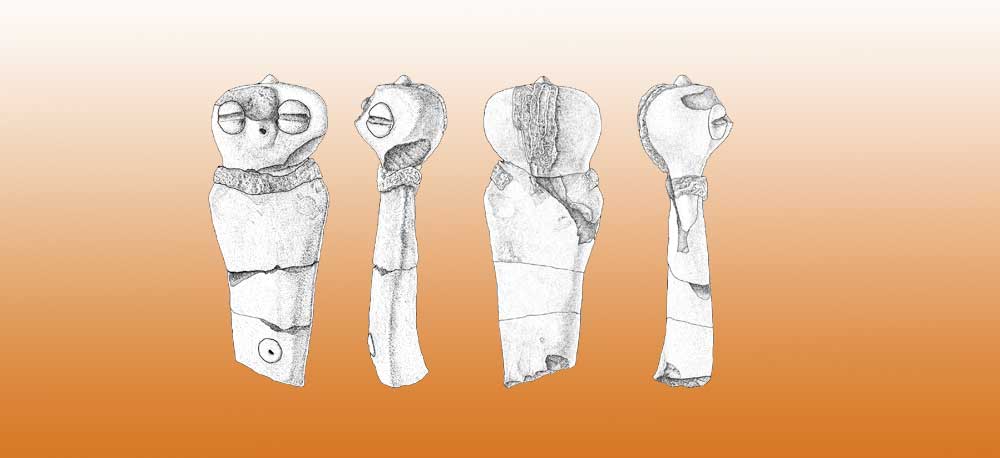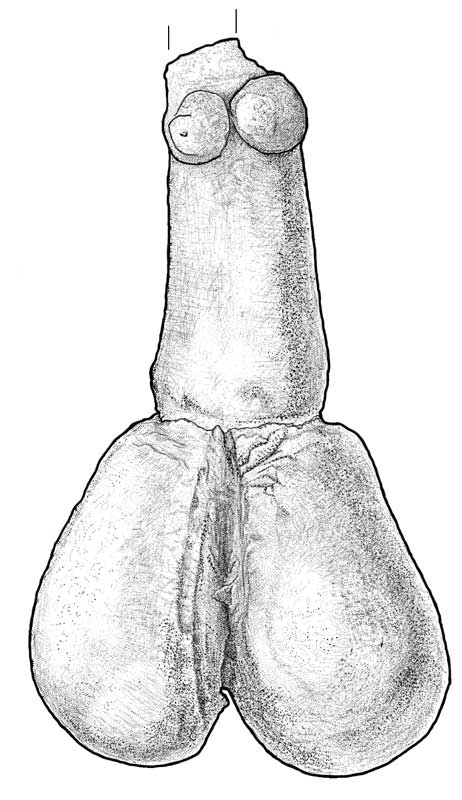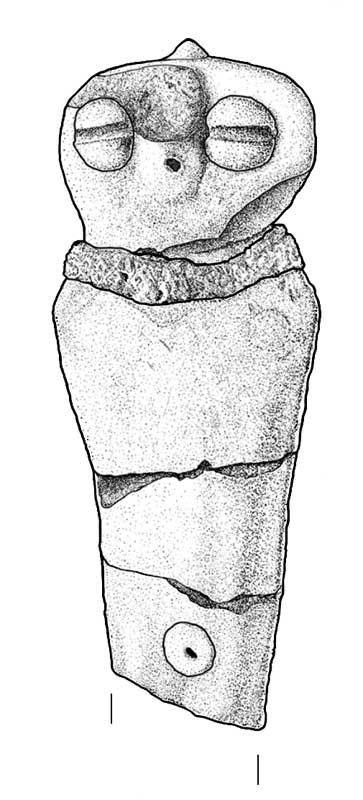
Early Agricultural Period Ceramic Figurines
Jim Heidke, Desert Archaeology’s senior ceramic analyst, explores the clay figurines made by the earliest farmers in the Tucson Basin. At once recognizable and enigmatic, these small artifacts played an important but as-yet incompletely understood role in the lives of the Tucson Basin’s earliest farmers.
Since 1986, Desert Archaeology and other cultural resources management firms have conducted archaeological fieldwork along the Santa Cruz River at numerous sites that date to the Early Agricultural period (2100 BC-AD 50). That long time span is divided into three phases. The Silverbell interval (2100-1200 BC) saw the introduction of maize into the area, the building of the first irrigation ditches, and the seasonal gathering of people in small settlements. During the San Pedro phase (1200-800 BC), people built massive irrigated field systems at Las Capas. By the end of the Cienega phase (800 BC-AD 50), a large number of small villages were present along the river, spreading up from the floodplain onto the adjacent terraces.
The excavations at these Early Agricultural period sites have led to a revolution in our understanding of the area’s prehistory. Material culture studies have revealed new information on a variety of artifacts, including ground stone cruciforms and an unusual cache of artifacts found in a Late Cienega phase (400 BC-AD 150) pithouse at Los Pozos. Our work along the river has also turned up a number of low-fired (baked at a low temperature) ceramic figurines. Recently, I have studied the figurines found at the Early Cienega phase (800-400 BC) Clearwater and Wetland Sites, and compared them to ones found at San Pedro phase sites and individual features along the river, including at Las Capas, Los Pozos, and the Dairy Site.
The very few figurine fragments we have recovered from Silverbell interval contexts are not enough to form conclusions as to what they looked like, but figurines from the San Pedro phase can be divided into early and late styles. The early San Pedro style has a flaring head, a long cylindrical torso, and a teardrop-shaped base. The front of the head often has a pinched nose, while the lower body has multiple C-shaped incisions.
The late San Pedro style has a cylindrical head and torso joined to a two-lobed, bulbous base. The seam between the bulbs was usually covered by a thin appliqued strip of clay. The face may have punctate eyes, with appliqued braids on each side of the head. Applied breasts may be present. Some people have suggested these figurines represent a combined male/female with breasts and large testicles.
Early Cienega phase figurines were made by pressing two vertical rods of clay together. The lower portions of the rods were left separate to depict the legs, while the upper portions were fused together to form the torso. Feet come to a rounded point.

The right leg from an Early Cienega style figurine from the Clearwater Site. Illustration by Robert Ciaccio.
The legs and torsos may have incised or punctate decoration, perhaps representing body painting or tattooing. Projections on the rear of the torso appear to be buttocks. Arms are not present, but bulging shoulder stubs are. Appliqued navels may indicate a pregnant, female figurine.
The only Early Cienega phase figurine head that has been found so far was molded separately and pressed onto the torso. A necklace is represented by a strip of clay at the joint. The face displays appliqued eyes, a pinched nose, and a small punctate hole representing the mouth. A pointed knot at the top of the head and incised, appliqued braids running down the back represent an Early Cienega phase hairstyle.
What were figurines used for? Ideas advanced so far include use in rituals relating to ancestor worship, fertility, rain, and success in raising crops. As the number of excavated figurines increases and their diversity, location of discovery, and changes through time are more fully documented, we will reach a better understanding of these tiny but significant artifacts and the role they played in Early Agricultural period life along the Santa Cruz.





